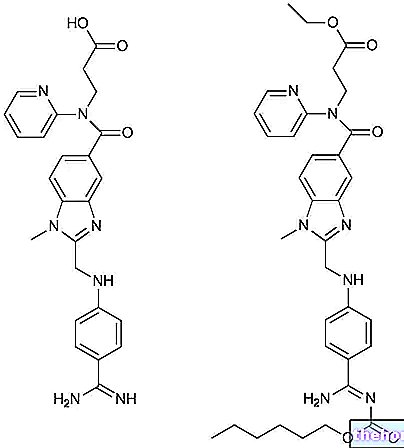
What is Tredaptive?
Tredaptive is a medicine containing two active substances: nicotinic acid (also known as niacin or vitamin B3) and laropiprant. It is available in modified release tablets. By "modified release" we mean the fact that the two active ingredients are released from the tablet at different speeds over a period of a few hours.
What is Tredaptive used for?
Tredaptive is used as an adjunct to diet and exercise in patients with dyslipidemia (excessively high levels of fat in the blood), particularly with 'mixed dyslipidemia' and 'primary hypercholesterolaemia'. Patients with combined mixed dyslipidemia have, in the blood , high levels of LDL (so-called "bad") and triglycerides (a type of fat) cholesterol and low levels of HDL (so-called "good") cholesterol. Primary hypercholesterolemia is the condition in which blood cholesterol levels are high, "primary" means the fact that the "hypercholesterolemia is not attributable to a specific cause.
Tredaptive is usually given together with a statin (the standard cholesterol-lowering drug) in cases where the statin alone is not effective enough. Tredaptive is used on its own in patients who cannot take statins.
The medicine can only be obtained with a prescription.
How is Tredaptive used?
The starting dose of Tredaptive is one tablet once a day for four weeks, after which the dose is increased to two tablets a day. The tablet should be taken by mouth with food, in the evening or before bedtime, and should be swallowed whole, i.e. without dividing, breaking, crushing or chewing it. The use of Tredaptive is not recommended in young people below 18 years of age due to a lack of information on safety and efficacy for this group. It should also be used with caution in patients with kidney problems and should not be used in patients with liver problems.
How does Tredaptive work?
The two active ingredients of Tredaptive, nicotinic acid and laropiprant, have different modes of action.
Nicotinic acid is a naturally occurring substance that, in low doses, is used as a vitamin. In high doses it reduces the levels of fat in the blood by a mechanism not yet fully understood. The first uses of nicotinic acid as a drug to modify blood fat levels
date back to the mid-1950s, however it has been used to a limited extent due to side effects, particularly redness of the skin.
The redness caused by nicotinic acid is thought to be due to the release of a substance, "prostaglandin D2" (PGD2), by skin cells which causes dilation of the blood vessels in the skin. Laropiprant blocks the receptors that PGD2 normally attaches to. With the receptors blocked, PGD2 is unable to dilate the vessels of the skin and this reduces the frequency and intensity of the redness.
The Tredaptive tablet consists of a layer of laropiprant and a layer of nicotinic acid. After ingestion, laropiprant is released into the blood first, blocking PGD2 receptors. Nicotinic acid is released more slowly from the other layer and its function is to modify fat.
How has Tredaptive been studied?
The effects of Tredaptive were first tested in experimental models before being studied in humans.
Tredaptive has been studied in four main studies involving patients with hypercholesterolaemia or mixed dyslipidaemia.
Two studies looked at the effectiveness of Tredaptive in modifying blood fat levels. The first study compared the effectiveness of Tredaptive with that of nicotinic acid alone or a placebo (a dummy treatment) in lowering cholesterol levels. LDL on a total of 1613 patients.The study also examined the symptoms of redness using a specially prepared questionnaire.
The second study compared the combination of Tredaptive and simvastatin (a statin) versus Tredaptive alone or simvastatin alone in 1398 patients. The main measure of effectiveness was the change in blood LDL cholesterol levels after 12 weeks.
The third and fourth studies examined the efficacy of laropiprant in reducing redness caused by nicotinic acid in a total of 2,349 patients receiving Tredaptive or nicotinic acid. Redness was measured using a redness symptom questionnaire. .
What benefit has Tredaptive shown during the studies?
Tredaptive was effective in reducing LDL cholesterol levels in the blood. In the first study, LDL cholesterol levels were reduced by 19% in patients treated with Tredaptive compared to 1% in patients treated with placebo. The second study showed that LDL cholesterol levels were lowered further if Tredaptive was taken in combination. with simvastatin (48% reduction), compared with Tredaptive (17% reduction) or simvastatin (37% reduction) taken alone.
Adding laropiprant to nicotinic acid reduced the symptoms of nicotinic acid-induced redness. In the first and third studies, there were fewer reports of moderate, severe or extreme redness in patients treated with Tredaptive than in patients treated with nicotinic acid alone. In the fourth study, redness appeared for fewer days in patients treated with Tredaptive than in patients treated with nicotinic acid alone.
What is the risk associated with Tredaptive?
The most common side effect associated with Tredaptive (ie the one seen in more than 1 in 10 patients) is redness. For the full list of side effects reported with Tredaptive, see the package leaflet.
Tredaptive should not be used in patients who may be hypersensitive (allergic) to nicotinic acid, laropiprant or any of the other ingredients. It should also not be used in patients with liver problems, active stomach ulcers or arterial bleeding.
Why has Tredaptive been approved?
The Committee for Medicinal Products for Human Use (CHMP) decided that Tredaptive's benefits are greater than its risks for the treatment of dyslipidaemia, particularly in patients with combined mixed dyslipidaemia and in patients with primary hypercholesterolaemia, and recommended that it be released. marketing authorization for Tredaptive.
Other information about Tredaptive:
On 3 July 2008, the European Commission granted Merck Sharp & Dohme Ltd. a "Marketing Authorization" for Tredaptive, valid throughout the European Union.
For the full version of the Tredaptive EPAR click here.
Last update of this summary: 05-2008.
The information on Tredaptive published on this page may be out of date or incomplete. For a correct use of this information, see the Disclaimer and useful information page.




























